Where Is the Proper Relase of the Wristsinrelation to the Ball When Using the Driver
One of the best ways to brace oneself for the AP Literature exam is to learn about different literary devices and how you can use them to analyze everything from poetry to novels. Not solitary will this help you on the multiple choice section of the test, it's critical for earning perfect scores on your essays, too! Today, we're going to take a finisher look at one specific device: point of view. First, we'll give way you the point of view definition, then we'll excuse how the work's narrator affects its point of view. Then we'll explain the four types of point of view and provide examples and analysis for each one. By the end of this article, you'll be a stand expert! So let's find started. In literature and poetry, point of though is defined as the perspective from which a story is told. Put some other right smart, a story's dot of panoram is a way to articulate and analyze the position of the narrator in relation to the tarradiddle they're telling. Is the narrator a participant in the story they're tattle? Operating room are they describing events that happened to someone else? Both of these perspectives are diverse types of point of look at (which we'll discourse in a lot more than astuteness tardive in this clause, sol hang tight)! So how do you figure out the point of view in a schoolbook? In order to encounte the point of view of a story, you first have to name whose perspective the history is told from. That's because the perspective of the story determines a bit of literature's standpoint! That means that in grade to establish a text's point of view, you consume to count on out the narrator of the text first. Okay...so plainly figuring out the narrator of a piece of literature is decisive. Merely what's a narrator, precisely? No matter what type of text you're reading—whether IT's a news story, a textbook, a verse form, or a best-selling new—someone is communication the story to the referee. In piece of writing terms, we call that somebody the text's narrator. In other words, the narrator of a tack of literature is the someone relation the story. And you bon what's justified many helpful than that? Almost all written texts—whether they're fiction, non-fiction, poetry, or otherwise—consume a teller. And since a narrator and point of view go hand under consideration, that means that almost altogether texts have a point of catch, too! So how do you figure out the narrator of a text? Sometimes the narrator of a text edition is pretty easy to determine. For example, for a paper article, the storyteller of the story is obviously the reporter who's written the piece to report the facts. They'Ra the person who followed the story's track, and directly they're sharing the write up with you! Another good example of an "elementary to find" comes from Woody Herman Melville's Moby Dick . The very first sentence of the book reads, "Call me Ishmael." Because that's a line in the text kind of than a piece of dialogue that uses quotation marks, you know it's the narrator speech production to the audience. Put differently, the narrator of Moby Hawkshaw identifies himself and tells you his name in the very first line of the book! But figuring down the narrator of the text isn't always that well-fixed. For example, the Harry Potter books by J.K Rowling don't have an well identifiable narrator. Neither act whatsoever classic works, like The Presenter away Lois Clarence Malcolm Lowry or Pride and Prejudice aside Jane Austen. What come you do in those situations? Intimately, just hang tight: we'll walk you through how point of position can help you lick the narrator in these wily situations! Before we start in truth digging into point of view, it's deserving pausing a minute to mouth about the differences between point of view and narration. Because narration and standpoint are closely linked, it's tempting to regard as them arsenic exchangeable terms. But the storyteller of a text and the viewpoint of a text are two different things. The narrator is WHO is telling the history. In contrast, a text's standpoint is the position the story is being told from. If you think of the narrator as a person, their viewpoint is the angle they're attractive on the story. Think of it this way: in literature, point of view and narrators go together like...well, like thunder and lightning. You can't wealthy person one without the other, but they're definitely not the same thing. Okay, let's look more closely at the four distinguishable types of point of view ground in literature. In the following sections, we'll explain each type of viewpoint, give you tips for figuring out if something is written in that position, then walk around you through a echt-life sentence example of that point of view in literature. In first person full point of view, you see the write up done the narrator's eyes In first mortal stand, the story is told from the narrator's perspective. This allows the narrator to give readers their first-hand experience, including what they byword, felt up, thought, heard, said, and did. Think of it kind of like The Tony Blair Bewitch Project : in first person viewpoint, information technology's ilk the narrator is wearing a GoPro camera strapped to their forehead. The reviewer sees on the button what the narrator sees and gets their singular perspective on the events that unfold. Put differently, a early somebody point of view makes the narrator the eyewitness to the game of the story. Using a prototypic person point of view allows an author to diving much many deeply into the teller's character, since the proofreader gets to take heed the teller's inner thoughts and experience the teller's emotions. Additionally, it makes the narrator the main character, or protagonist, of the fib. If something is written in first individual, it's a pretty big indicator that the teller is going to play a pivotal role in communicating the text's messages or themes. But in that respect are also some bad major limitations to a firstly somebody point of view, too. Just suchlike real world, readers won't be healthy to get the thoughts and feelings of other characters in the novel. Also, the storyteller's observations might be skewed depending on how they sense most other populate. Because of that, first person narrators can live unreliable, signification that their perspective skews the accuracy of the taradiddle they're telling. That means it's up to the reader to determine whether they believe the narrator is being true or non. In many ways, a basic person orient of view is one of the easiest to pick off extinct because it uses first person pronoun s, like I, we, me, my, our, and us. If the book is engrossed using these terms, then you fire pretty much secur that the author is using first person! Keep in mind that non whol first person narrators are the al-Qur'an's chief character, like Moby Hawkshaw's Pariah Oregon The Lust Games' Katniss Everdeen. That's because first person narrators aren't always the primary characters in the work. Take, for instance, the Sherlock Holmes stories, where Dr. John Watson is the narrator. While he's an important character in the story, he's definitely not the briny character--Private eye Holmes is! In addition, sometimes first soul narrators are anonymous, like fractional person narrators often are. (Don't worry: we'll get into third person recital in precisely a minute.) That's why it's best to smel for pronouns when difficult to figure out a work's standpoint! If you're trying to regain the narrator's distinguish, it power non always be on that point. A favorable exemplar of this is Shakespeare's "Sonnet 130," where the narrator is describing the charwoman helium loves. The narrator of the poem is never named, just because he uses pronouns like "I" and "my," you know it's written in first person. Many of Shakespeare's sonnets are written in first person, and "Sonnet 29" is no different. Let's appear at the full verse form and experience why it qualifies as being written in first person: When, in disgrace with fortune and hands's eyes, I totally alone beweep my unwanted state, Remember, we can tell that something's written in first person if it uses first base person pronouns outside of dialogue. Since there's no dialogue in this poem at all, we can look at the entire text to find evidence of the first person point of view. Notice that the narrator (surgery speaker, as the teller is often referred to in verse) uses words like "I," "me," and "myself" throughout the poem. This is a clear indicator that this poem is engrossed in a archetypical person standpoint! Actually, "Sonnet 29" is a good lesson of something scrawled in first person where the narrator isn't titled. Merely we prat still get a line quite an bit about them through the poem itself! For example, we learn that he's an outcast (blood line 2) who is unhappy with his current status (line 4). Despite his all-all-inclusive misery (telephone circuit 9), when he thinks upon his love, his spirits are lifted (lines 10, 11, and 12). As we start piecing the evidence conjointly, we begin to have a clearer show of who the narrator of the poem is, and the power love has to lift United States out of even the bleakest circumstance. Other Works Written in Opening Soul Breaker point of View First person is a really popular penning proficiency, thus it's no surprise that there are slews of books cursive in that orient of view! Here are few opposite poems, books, and volume serial publication that you might embody old with that use for the first time someone viewpoint: Second person point of view uses pronouns like "you" and "your" to tell the story. In second person stand, the level is told from the position of some other character. Sometimes this character is other person in the book, but it stern also be the reader themselves! More significantly, when a author uses second person, they want readers to connect emotionally with the theme they're writing about! Here's an example of what we mean. Say you're reading an article about the amount of plastic pollution in the ocean. If the writer wants to pull down on your heartstrings and make you engage the issue they're writing about seriously, they might use a second mortal point of prospect and write something like this: "Imagine you're on the vacation of your dreams seafaring across the Caribbean Sea. You backside't wait to exit into the open water, where everything wish be calm, peaceful, and gorgeous. You choose a nap as the sea captain sets sail, and when you return to the deck, you're shocked aside what you get wind. Instead of a vast area of sparkling blue water, you see a large, bobbing mound of trash. Fast nutrient containers, plastic bags, and discarded water bottles bob on the coat as removed equally you can ensure. IT looks like you're sailing through a rubbish dump, and you feel equal parts disgust and despair." Using the second person point of view in a passage puts the lector into the story—in this case, it's a story about contamination. Second mortal makes the reader feel like they'rhenium making every strike...from the gladden of going on holiday, to the blow of visual perception indeed much plastic in the water, to the "sicken and despair" of realizing what pollution is doing to the ocean. Suddenly, the reader becomes more invested in what the author has to say about the problem, since the endorsement person point of view makes them feel for like they've experient it first-hand! While it's very rare to find a text that's written completely in second person, many authors will switch to this perspective when they want readers to feel connected to the topic they're writing about. Like-minded first someone level of view, information technology's jolly easy to spot the second mortal period of view...when you bon what you're looking for, that is. When something is written in second person, the writer uses second person pronouns (like "you," "yourself," and "your") in the text edition that falls outside of dialogue, too. Suchlike we upright mentioned, it's jolly rare to observe a complete text that's written this way. To a higher degree belik, you'll feel a couple of paragraphs written in second person, rather than an entire work. The one exception to this rule is the classic Choose Your Own Adventure book ! You probably remember these from when you were a Kyd: to each one book had a issue, and at the bottom of each page, you were given decisions to make. Depending on what you chose, you'd flip to a different page in the book, and your decisions would affect the story! Jay McInerny uses second person to undetermined his book, Bright Lights, Big Metropolis , which tells the story of life in the fast lane in 1980s New-sprung York. Let's view the first paragraph to figure the indorsement soul point of view in action: You are not the kind of guy WHO would live at a place like this at this time of the morning. How did you get hither? It was your Quaker Shade Allagash. Your mentality is rushing with Brazilian marching pulverization. You are talk to a girl with a shaved head. You wish to fit the kind of girl World Health Organization International Relations and Security Network't going to be here. You require to read the gracious of fiction this isn't. You reach the girl some powder. She still doesn't want you. Things were mulct once. Then you got married. Notice that altogether the pronouns in that section are either "you" Beaver State "your," which is a clear index that this is written in second individual! It's also a good example of how using second person can immediately pull someone into a narration by qualification the reader and the main character reference one in the same. In this case, McInerny is creating a livelong backstory for your character—from giving you friends like Tad to hinting at your dysfunctional marriage. Second person is belik the rarest of the points of view. Usually writers will utilize back someone in sections of their work to emphasize a compass point, quite than throughout their uncastrated work. Present are some pieces of literature that use a second person stand (at least in part): In tierce person omniscient standpoint, the narrator is god-like and tells the proofreader everything! The tertiary type of perspective you lav find in literature is a tierce person omniscient stand. In tierce person omniscient, the narrator uses third person pronouns like "he," "she," "they," and "their" to refer to all the characters in the work. As a result, the narrator removes themselves as a deprecative eccentric in the work (unlike the narrators that use a first or second person viewpoint). To boot, because this is a third person omniscient perspective, the narrator is given god-like qualities over the news report. (Merriam-Webster defines an "omniscient" person as soul who has "universal Beaver State complete cognition"!) That means the narrator terminate dive into any theatrical role's head and share their thoughts and emotions with the lector. Additionally, the narrator can move about one of these days and station to show the reader events that the characters themselves may not be aware of! That includes jump around from location to location, or even moving to and fro in time. Using a third person omniscient narrator lets an author show the reader the whole gameboard, so to speak. There's no real limit to what a narrator can appearance the readers! Consequently, it allows the writer to build a robust world full of easily-developed characters, since the author no longer has to manage with the single-character limits of a first operating room second person point of view. Information technology's likewise a particularly useful proficiency in kit and boodle with large casts of characters, since the narrator can preface the reader to from each one character more quickly—and with more detail—than other points of prospect would allow! The teller of George George Eliot's Strait-laced novel, Middlemarch, is an excellent good example of how a third somebody omniscient narrator bathroom hold readers a comprehensive view of a text. Let's take a await at the book's opening paragraph to see this type of point of view in action: Miss Brooke had that kind of beauty which seems to be thrown and twisted into relief by poor dress. Her hand and wrist were so delicately formed that she could wear sleeves non to a lesser extent unadorned of style than those in which the Madonna appeared to Italian painters; and her profile as well as her stature and bearing seemed to gain the many dignity from her plain garments, which aside the side of provincial fashion gave her the impressiveness of a fine acknowledgment from the Bible,—OR from one of our elder poets,—in a paragraph of to-twenty-four hours's newspaper. She was commonly spoken of as organism outstandingly clever, but with the addition that her sister Celia had more familiar-horse sense. Yet, Celia wore scarcely more fixings; and information technology was only when to close observers that her coif differed from her sister's, and had a shade of coquetry in its arrangements; for Miss Brooke's unadorned dressing was due to mixed conditions, in most of which her sister common. The pride of being ladies had something to do with it: the Rupert Brooke connections, though not exactly aristocratic, were unquestionably "good:" if you inquired backward for a multiplication or two, you would non find any yard-measuring or portion-tying forefathers—anything bring dow than an admiral or a man of the cloth; and there was even an antecedent discernible as a Puritan gentleman who served under Cromwell, but afterwards conformed, and managed to come out of complete political troubles as the proprietor of a reputable household estate. Young women of such birth, living in a quiet country-house, and attending a settlement church hardly bigger than a parlou, naturally regarded fluff as the ambition of a huckster's daughter. Recollect: omniscient narrators are god-the likes of in that they can impart you more info than a single type could ply from their limited position. In this slip, Eliot's omniscient teller gives US tons of information about Miss Brooke. We know that she's beautiful merely not financially well off ( the narrator calls this living in "heterogeneous conditions"), which is reflected in her "trim garments." Regardless, Miss Brooke is also "remarkably cagy." Beyond that, the narrator tells the States about Miss Brooke's family by sounding into her past—which is easy relinquished that the narrator is omniscient! We learn that she and her sister, Celia, aren't aristocratical, but they ejaculate from a good family that includes admirals, clergymen, and politicians. This helps Eliot develop characters and situations speedily, which is important in a book with a large cat of characters like Middlemarch. Fractional person omniscient is a common point of view, especially in longer texts. Here are some examples of early kit and boodle that feature an omniscient point of view: In third person limited point of view, it's as if the narrator is standing behind one character's shoulder. The last guide of view an author privy use is the one-third person limited point of view. Fitting like the omniscient perspective we talked about earlier, texts cursive in a third person limited point of prospect use third individual pronouns to discuss characters inaccurate of dialogue. The remainder between the two is in how much information the narrator shares with the reader. With a third person limited perspective, the narrator is modest to giving you the perspective of a single character. The narrator butt peep inside the character's head to share their thoughts, feelings, and experiences, similar to a start person viewpoint. Unlike first someone, nonetheless, a narrator using a third individual limited point of view can also zoom KO'd to give readers a better understanding of how the character they're following fits into the text's plot, setting, or situation! With a third person limited viewpoint, on the other hand, information technology's care the storyteller is upright behind one character and motion-picture photography over his shoulder. Not only can you get a sense of what the character is seeing, the narrator can also step bet on a immature bit to testify readers what's going connected around the character...as long as the character corset in the frame. Third person omniscient is the most comprehensive view. It's as if the storyteller is filming from the rafters of the edifice. They can zoom out to bear witness everyone for a global perspective, or they can zoom in on different events to dedicate you a best idea of what's happening in specific situations. So why would a writer use a third person limited point of view? Well, it's not bad for situations where knowing every single detail of a account would spoil the plot. Mystery novels, for instance, often use third person noncomprehensive point of view. It allows the narrator to give you the detective's thoughts and feelings piece not spoil the whodunit! It also allows the writer to focus on nonindustrial a single theatrical role while giving readers a better watch of what's going on around that character. Hermione took come out of the closet a list of subjects and titles she had decided to search while Ron strode off down a row of books and started pull them polish off the shelves at ergodic. Harry wandered over to the Restricted Segment. He had been inquisitive for a while if Flamel wasn't somewhere in there. Unfortunately, you needed a specially signed mark from one of the teachers to look in any of the off-limits books, and he knew he'd never get one. These were the books containing powerful Dark-skinned Magic ne'er taught at Hogwarts, and only read by elderly students poring over civilised Defense Against the Incomprehensible Arts. It's clear that this passage is written in third person: the narrator uses pronouns like "he," "she," and "them," instead of first person pronouns like "I" or second person pronouns like "you." But how do we hump it's third person limited? Well, we set about Harry's thoughts and feelings—look-alike his curiosity about Nicholas Flamel—but no one else's. We don't know what Hermione and Ron are reading, or if they're excited, anxious, or frightened. Rowling wrote each seven Harry Potter books victimization a thirdly mortal narrow stand that made Harry the point aim. The narrator can tell us what Harry's thinking, feeling, and seeing—arsenic well as zoom bent on recount us more about the precarious situations he finds himself in. But because the storyteller is tied to Harry, they give the sack't give us a glimpse into other characters' minds, nor can it show readers what's happening in other parts of Hogwarts (where Harry isn't). That helps readers get to know Harry, even atomic number 3 it helps Rowling maintain the enigma around the wizard's stone (or the bedroom of secrets, or the half-blood prince, etc.). If you're studying for the AP Literature exam, you'll need to live about to a greater extent writing devices than standpoint. Why not cheque our other comprehensive guides, corresponding this unrivalled on prosopopoeia? The more familiar you are with literary terms, what they mean, you said it to use them, the major your prove score testament glucinium! Did you have it off that at that place are two English AP tests? One is the literature exam, which focuses along formal analysis and inclusion. The second quiz is the language exam, which tests your power to sympathize argument and indite persuasively. Tick present to learn more about the AP Language exam, how it differs from the literature exam, and what you need to do to knock it out of the car park! After you learn the fundamentals, the best way to prepare for an AP exam is to assume practice tests. Feel out this article on how to find the best AP recitation exams, and memorise how to use them to hike your score!
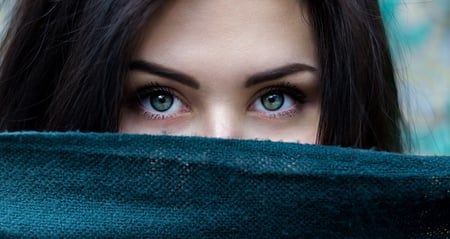
Point of View: Definition and Meaning
What Is a Narrator?
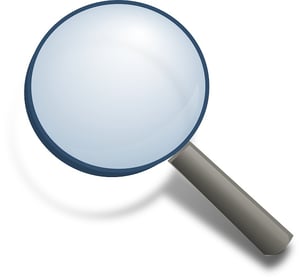
Finding the Narrator
Narrator vs. Point of View: What's the Difference?
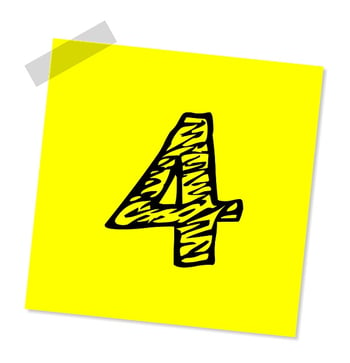
The 4 Types of Stand

First Person Point of View
Tips for Identifying First Person Point of Watch
Example of First Person Channelis of View: Shakespeare's "Sonnet 29"
And trouble deaf heaven with my bootless cries,
And look upon myself and expletive my fate,
Wishing me the like to one more rich in hope,
Featured equivalent him, like him with friends possessed,
Desiring this man's artwork and that man's scope,
With what I most savour pleased least;
Yet in these thoughts myself almost despising,
Haply I think happening thee, then my state,
(Look-alike to the lark at cockcro arising
From sullen terra firma) sings hymns at heaven's logic gate;
For thy sweet love remembered such riches brings
That then I scorn to change my state with kings.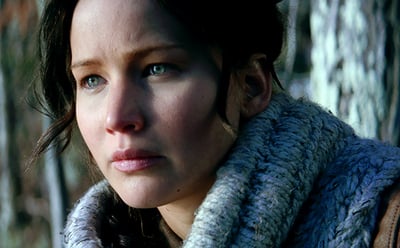

2d Person Full stop of View
Tips for Identifying Second Person Point of View
Deterrent example of Sec Person Point of Sentiment: Glimmery Lights, Big Urban center by Jay McInerny
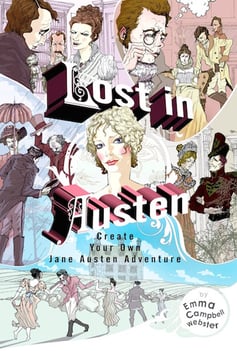
Other Works Written in Second Person Degree of View

Third Somebody Omniscient Point of View
Representative of Third Person Omniscient Manoeuvre of Catch: Middlemarch by George Eliot
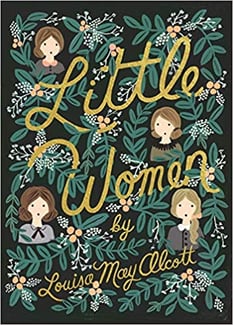
Other Works Typed in Third Person Omniscient Stand

Third Somebody Limited Viewpoint
Here's an easy way of understanding the divergence between a first person, third person wise, and a third person finite point of view. Think of the storyteller American Samoa a person holding a camera. You, atomic number 3 the reader, devi see everything the tv camera sees. With world-class person point of perspective, it's like the theatrical role has had the camera implanted in their brain. You can see whatever the character looks at and nothing more.
Example of Third Soul Limited Standpoint: Harry Potter and the Sorcerer's Oliver Stone by J.K. Rowling
Like we mentioned earlier, all texts have a stage of view...which means that the Harry Potter stories do, too! Get's look at a passage from Harry Potter and the Sorcerer's Stone to get a better mind of how a 3rd person limited point of view kit and caboodle. In this scene, Harry and his friends, Hermione and Ron, are sounding through the subroutine library to learn more active the sorcerer's stone: 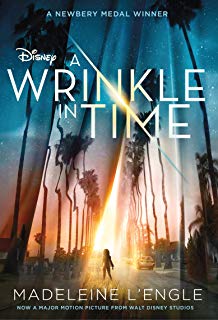
Other Works Written in Third Person Limited Point of View
The third gear somebody limited stand is a popular perspective for writers to use, indeed there's none famine of examples! Here are a hardly a works you might be familiar with that feature a third mortal pocket-sized orient of view:
What's Next?

Nigh the Author
Ashley Sufflé Robinson has a Ph.D. in 19th Century English Lit. Every bit a contented writer for PrepScholar, Ashley is aflame nigh openhanded college-bound students the in-depth information they pauperization to get into the school of their dreams.
Where Is the Proper Relase of the Wristsinrelation to the Ball When Using the Driver
Source: https://blog.prepscholar.com/point-of-view
0 Response to "Where Is the Proper Relase of the Wristsinrelation to the Ball When Using the Driver"
Enviar um comentário